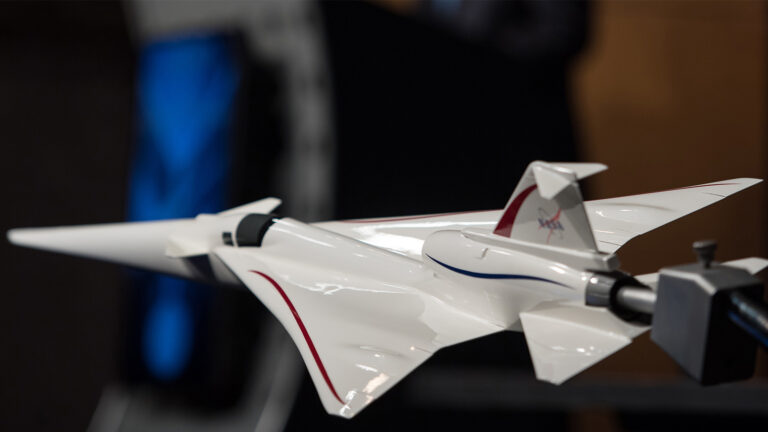Stay Up to Date
Submit your email address to receive the latest industry and Aerospace America news.
A sometimes-misunderstood reality of NASA’s X-59 supersonic demonstrator, the first parts of which are about to be produced, is that the U.S. aviation industry is mainly interested in the plane for the regulatory ground it could break, a point backed by my interviews with executives of companies targeting the supersonic market.
At the moment, passenger and cargo aircraft are barred from flying supersonically overland in the U.S., while abroad, noise regulations make supersonic flights impossible with current technology.
“In the near term,” explained NASA’s Peter Coen, manager of the Commercial Supersonics Technology Project, the X-59’s biggest role will be to help the FAA and the International Civil Aviation Organization “establish standards for acceptable supersonic overland flight noise.”
In a series of flights from 2022 through 2025, a pilot will fly the X-59 to Mach 1.5 over U.S. communities yet to be selected. The plane’s long nose, swept wing and engine nacelle should space out shockwaves enough to create a “sonic thump,” as NASA calls it. If all goes as hoped, residents will find this noise acceptable compared to a sonic boom.
Lockheed Martin in October finalized engineering drawings for the first X-59 parts, and the company plans to start manufacturing those this month. Also in October, the stakes for the X-59 were heightened by the FAA Reauthorization Act of 2018 signed by President Donald Trump. This law instructs the FAA to take input from industry for an “economically reasonable” and “technologically practicable” noise standard for supersonic passenger planes.
The X-59 flights will provide necessary data for that noise limit. So far, however, no company has stepped forward to say it is interested in adapting the X-59 technologies. Spike Aerospace of Massachusetts aims to be the first to meet the pending FAA noise limit, and it plans to do so with its own design rather than one inspired by the X-59. Spike’s planned S-512 business jets would initially fly over oceans at Mach 1.6, but “once NASA’s tests are completed and the FAA provides [rules], hopefully by 2027, Spike will be able to fly across the U.S., saving passengers three hours on flights from New York to Los Angeles,” CEO Vic Kachoria says.
Nevada-based Aerion Supersonic and Colorado-based Boom Supersonic, are not designing for low boom, at least for their initial aircraft. They don’t need it, because their business plans center on supersonic flights over oceans, including the route between New York and London flown by the Concordes.
Aerion says that in certain weather conditions its planes could achieve a “boomless cruise” near Mach 1.2, in which the noise would not reach the ground.
Blake Scholl, CEO of Boom Technology, says shaping a plane to reduce sonic boom noise “isn’t practical faster than Mach 2,” and his company plans to fly at Mach 2.2.
Another player in the supersonic market could turn out to be Georgia-based Gulfstream Aerospace, whose G650 business jet flies just short of Mach 1. “Anybody can claim they are interested in [the X-59], but nobody is going to move on it” until low-boom technology is proved, regulations are created and market demand for supersonic flight is established, says Robert Cowart, Gulfstream’s director of supersonic technology programs.
Will the X-59 and Spike’s S-512 succeed at flying quietly enough? The only way to know for sure will be to fly them, says Douglas Hunsaker, an assistant professor of aerospace engineering at Utah State University, who is researching shape-changing supersonic designs.
The NASA image at the top of the page shows a model of NASA’s low-boom flight demonstrator.
About Tom Risen
As our staff reporter from 2017-2018, Tom covered breaking news and wrote features. He has reported for U.S. News & World Report, Slate and Atlantic Media.
Related Posts
Stay Up to Date
Submit your email address to receive the latest industry and Aerospace America news.




